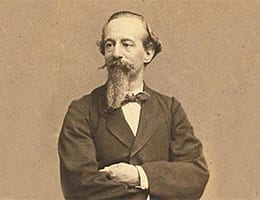 The middle of a verse is called a hemistich . The term, which derives from the Latin hemistichĭum (in turn originating from the Greek hēmistíchion ), is usually used to refer to each fragment of a verse that is separated from the others by a caesura .
The middle of a verse is called a hemistich . The term, which derives from the Latin hemistichĭum (in turn originating from the Greek hēmistíchion ), is usually used to refer to each fragment of a verse that is separated from the others by a caesura .
This means that, beyond the allusion to a “half” (indicated by the Royal Spanish Academy in its dictionary ), the hemistichs are not always two equal parts into which a verse is fragmented. It is possible that these parts are not equal, or that a verse may have three or more hemistichs.
This concept falls within the realm of meter , which is defined as the sum of all formal and systematic regularities that serve to characterize rhythmic prose and versified poetry. From a metric point of view, the study of writing is divided into three important parts: the poem, the stanza and the verse.
If we focus specifically on the Spanish meter, we have a verse that is made up of an invariable number of syllables and a certain distribution of accents , with an optional rhyme. In our language you can also find works with quantitative metrics, that is, those that arise when forming verses by concatenating syllables, which in other languages can have two or more durations; Greco-Latin is a clear example of quantitative meter, since it was created from the repetition of some sequences of long and short syllables, the so-called feet .
In meter , hemistichs are taken as complete verses . In the case of the Castilian meter, verses of more than nine syllables have hemistichs. Therefore it can be stated that an Alexandrian verse , which is composed of fourteen metric syllables, is formed by two hemistichs, each of seven syllables.
Similarly, a twelve-syllable verse that has a total of twelve syllables is formed with two six-syllable hemistichs. The hemistichs of the Alexandrian verbs and the twelve-syllable verses are separated by the aforementioned caesuras, which are pauses or cuts .
 Although we can define the word caesura in a simple sentence, it is one of the fundamental concepts of poetry . Without this pause or this space inside each verse, oral reading and understanding of the works would be affected. From an academic point of view, in verses containing more than eleven syllables we cannot fail to include at least one caesura. In any case, we must not forget that poetry emerged before all these technical concepts, which serve to understand it and, depending on each author, take it to new horizons but do not constitute an infallible recipe for creating art.
Although we can define the word caesura in a simple sentence, it is one of the fundamental concepts of poetry . Without this pause or this space inside each verse, oral reading and understanding of the works would be affected. From an academic point of view, in verses containing more than eleven syllables we cannot fail to include at least one caesura. In any case, we must not forget that poetry emerged before all these technical concepts, which serve to understand it and, depending on each author, take it to new horizons but do not constitute an infallible recipe for creating art.
Let's take the example of the poem “The Race of Al-hamar” by the Spanish writer José Zorrilla , born in 1817 and died in 1893 . In this composition the following verse appears:
“Fearful, feigning lost visions”
It is a twelve-syllable verse since it has twelve syllables: me-dro-sas fin-gien-do vi-sio-nes per-di-das . On the other hand, this verse shows a caesura that divides it into two: fearful, feigning // lost visions . Therefore, the verse “Fearful, feigning lost visions” has two hemistichs: “Fearful, feigning” and “lost visions.”
On the other hand, we have the concept of heterostichium , which also belongs to the scope of metrics and is defined as each unequal part into which a verse of major art is divided once the caesura comes into action. For example, if we take a decasyllabic verse that is divided into a part of six and another of four syllables, we can say that each of them is a heterostichium. The difference between this and hemistich is very simple: it would be two hemistichs if both parts had the same number of syllables.
